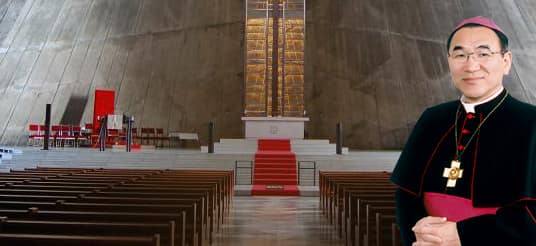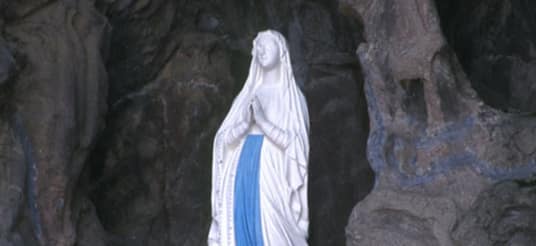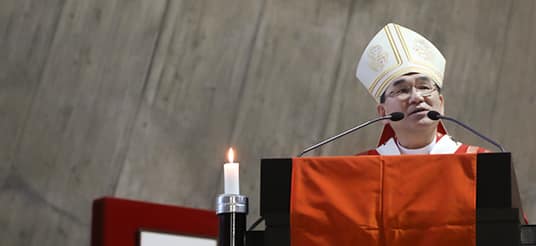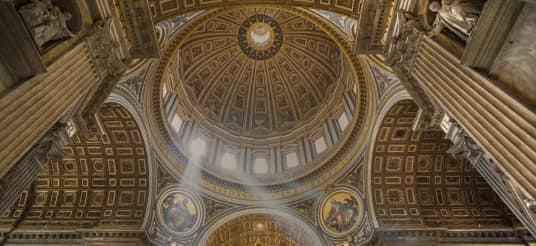Archdiocese of Tokyo

Easter Message
Kitami Catholic Church
March 23rd, 2008
“Now on the first day of the week Mary Magdalene came to the tomb early, while it was still dark, and saw that the stone had been taken away from the tomb.“(John 20:1)
This is the impressive introduction of today’s gospel. Awaiting the moment of dawn, the one who visited the tomb was not a male disciple, but Mary Magdalene, one of the female followers of Jesus. (Maybe some other female companions were with her.) She noticed that something had happened, and went back immediately to tell Peter and John, since the stone of the tomb had been taken away. The two disciples had not yet visited the tomb of Jesus.
The Gospel says “He saw and believed” (John 20:8) and also “for as yet they did not know the scripture!” (John 20:9)Then what did he believe? Did he believe the resurrection of Jesus, or that He was the Son of God? What did they not understand about the scripture? Was it what the prophets had spoken in the Bible about the resurrection of Jesus?
Mary Magdalene was a person who cared for Jesus very deeply. Jesus also loved her very much. The first one who had met the Risen Lord was Mary Magdalene. She became the first witness of His resurrection. Later the other disciples, including St. Peter, met the Risen Lord, and their faith being strengthened, they began to preach courageously. Thus faith should be strengthened and deepened. The faith of the disciples became strong and deep, even for St. Peter, who had denied Jesus three times.
In the reading of today’s liturgy from the Acts of the Apostles, St. Peter testified about Jesus with confidence: “How God anointed Jesus of Nazareth with the Holy Spirit and with the power…how he went about doing good and healing all that were oppressed by the devil…they put him to death by hanging him on the tree but God raised him on the third days and made him manifest,” and “To him all the prophets bear witness that every one who believes in him receives forgiveness of sins through His name,” (Acts of the Apostles 10:34-43) St. Peter explained.
Our Church has been the witness of the resurrection and is telling the same Good News just as St. Peter had done. At present the Church is telling the same testimony and testifying to the resurrection of Our Lord Jesus Christ. This is the mission of the Church in the world.
Pope Benedict XVI has declared that from June 28th this year the Church would celebrate a Year of St. Paul. St. Paul had met the Risen Lord and became the Apostle of the Gentiles. His teachings are recorded in his letters in the New Testament. During this special year of St. Paul, let us read the letters of St. Paul in the Bible carefully, and learn from them so that we will be able to follow the example of St. Paul’s faith.
St. Paul is a martyr and the Church honors many martyrs. We also have many martyrs in the Japanese Church. On November 24th this year we are holding the Beatification Ceremony in Nagasaki of Petro Kibe and 187 other martyrs. Of these 188 martyrs, 183 are lay people. In the first half period of 17th century they had witnessed to their faith vigorously and courageously. On this very special occasionIwould like to invite you all to learn from these martyrs and deepen our faith. Then we must reflect on how we should witness to our faith in this present time?
On the 3rd of February last I offered the Mass commemorating 50th anniversary of the death of Elizabeth Maria Satoko Kitahara, who died at the age of 28 years. A memorial talk by Mrs. Shizuko Togawa, who had been with Satoko Kitahara during her last six years, was held after the Mass. Just after the end of World War II there were many poor people all over Japan. It is quite well known that Satoko Kitahara lived in a very small three-mat room in a dormitory in the “Ants Town,” and came to be known as Maria of the “Ants Town” (Ari-no-machi no Maria). I was quietly impressed by listening Mrs. Togawa’s talk. Satoko Kitahara did not found her own movement or perform some great work. But by her daily way of life she gave witness to her faith.
Fifty years after her death, Japanese society has been totally changed. In their social life people have become tense due to keen competition and the strict administration of resources, they are losing their sense of self, and exposed to many forms of stress. Where is the warm tender heartedness and kind relationships that were once observed among the people in the “Ants Town”?
It is we, the Church, who should be the real witnesses and a sign for people of the Risen Christ alive among us. The Church ought to be a light shining in the darkness and a fountain of water in the desert.
In our modern world, where many people may be rich economically but poor spiritually, we should search more than ever before for the living faith of Satoko Kitahara.
Let us pray that the Holy Spirit, the fountain of life, may be poured abundantly upon us; that the light of Christ may shine in our hearts; and that we may be able to walk along our ways with Him.
Archbishop Peter Takeo Okada
Archbishop of Tokyo
Easter 2008





